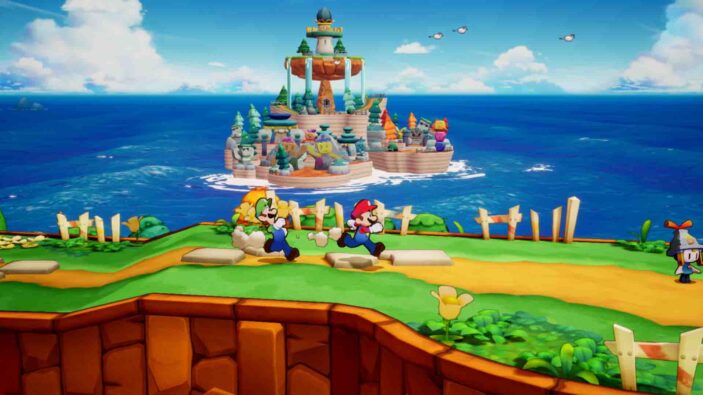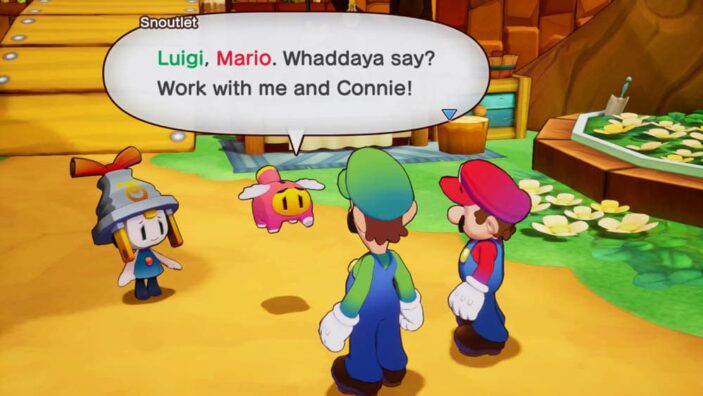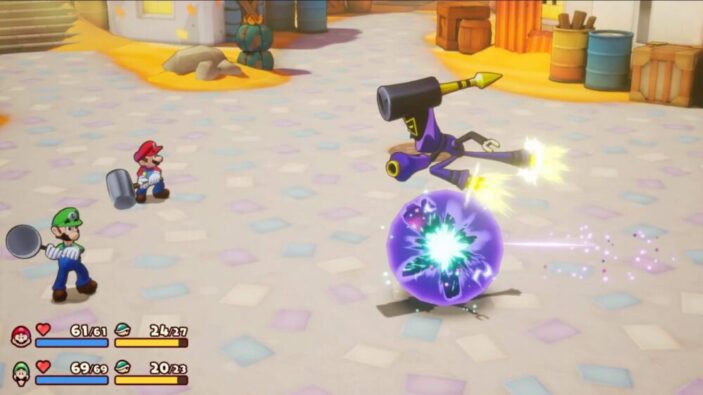
It’s been far too long between outings for Nintendo’s acclaimed Mario & Luigi RPG outing. This has supposedly been rectified by masterful remakes of two of the series’ most acclaimed titles, as well as a brand new adventure in Mario & Luigi: Brothership.
The interesting release strategy is a smart move from Nintendo, nodding to just how beloved the RPG spin-offs for Nintendo’s most iconic character set have been. Yet, just because the series rests on a strong legacy, doesn’t mean that Brothership is bound to succeed. In fact, despite how many units the RPG will move in the coming months, it’s a largely disappointing entry. I daresay it’s the first one that’s left me feeling underwhelmed.
Then developers AlphaDream were MVPs for the Nintendo 3DS. Dream Team, Paper Jam, Superstar Saga and Bowser’s Inside Story consistently improved on an innovative concept, sketching Mario lore onto a classic JRPG style with neat mechanics and memorable boss battles. The simple formula was mostly foolproof, but Brothership’s thin story, nauseating insistence on hand-holding and generic puzzles make for an undercooked comeback.
It doesn’t bode well for new developers Acquire, who took on the mantle after AlphaDream filed for bankruptcy. But perhaps that is the reason for a more straight-laced, less eccentric outing for the Mario & Luigi series. Acquire is better known for more serious RPGs like Octopath Traveler. This is the first time, to my knowledge, that the developer has worked on a first-party Nintendo title. I daresay it shows.
It’s not a pig, guys

Until the excellent Mario vs Rabbids came along, Mario & Luigi was the funniest spin-off series for pop culture’s most famous Italian plumber. Each story was backed by an overly indulgent, whimsical sense of humour that worked quite well, especially when it involved everyone’s favourite misanthropic lizard, Bowser.
Brotherside is a sad exception. The rather rote hand-holding is so consistently annoying that it sucks any enjoyment out of the first few hours of the game. And while the tendency for overlong cutscenes and painfully obvious dialogue does take a step back as the game rolls on, the unevenness dints the overall gameplay.
You’re Mario. You lose Luigi for all but 5 minutes only to end in another world, on a fractured continent that desperately needs saving. The archipelago has been split into multiple islands and you’re task: to connect them via plugs. Simple, straightforward, and only kind of interesting. You see, at its heart, Brothership is about the need for connection told through on-the-nose metaphors like blocky characters that walk around with plugs on their heads.
While you’re tasked with reconnecting all of Concordia’s islands, you meet a large cast of supporting characters, all of whom are completely forgettable when compared to the colourful, well-drawn characters of previous Mario & Luigi games. The most annoying is Snoutlet, a kind of flying socket that vaguely resembles a pig. The new assistant likes snuggling under Luigi’s hat and has only one joke: reminding everyone that Snoutlet is not a pig.
The dad-grade humour makes the dialogue even more of a struggle to get through, breaking any level of immersion.
Combat is still the highlight

For much of the game’s opening hours, you can barely walk a few steps before triggering a new, overlong string of dialogue with Snoutlet or another NPC explaining obvious solutions to obvious puzzles. This becomes incredibly tedious after a while, especially since the “fast forward” option of holding B is nowhere near fast enough. This means puzzles that could be over in a mere minute can take much longer simply because you’re spending more time churning through text bubbles than you are playing the game.
Given the overall ability for people, no matter their age, to pay attention is famously dwindling, I think Nintendo would be better served coming up with better ways to move past the traditional JRPG tendency of excessive dialogue. Gamers aren’t as patient as they used to be.
Nintendo still manages to fit plenty of style into the game’s 34-hour runtime. Visually, the cutscenes are impressively rendered and engaging. I love the cartoon art used for much of the game. It feels fully fleshed out and is leaps and bounds ahead of what the 3DS titles were capable of. That said, the residents of Concordia look lazy and blocky, while early-game enemies lack imagination.
Nintendo has introduced a few new mechanics to make the game interesting, but this only really works when it comes to the game’s otherwise solid battle mechanics.
Luigi Logic is an interesting concept, but it also completely cuts off Luigi’s use in many of the puzzles. The Mario & Luigi RPGs were so fun because you had to use both brothers to solve puzzles. Now you just watch Luigi have an idea, press L to watch him execute it, and he basically shows you how to solve the puzzle with very little guesswork. Having an NPC quite literally hold your hand, forcefully, really saps any sense of reward out of the game.
And so the title lives or dies on combat, which is thankfully still fun with its quick-time events and interesting Bros. Attacks. But you’ll have to play through at least half the game before battles become even the slightest bit challenging. Nintendo keeps it interesting with the introduction of Battle Plugs, which are modifiers that you can use to boost various stats in battle (like Paper Mario’s badges). You can smartly string together various combos with this, which adds more strategy to battles.
However, because only several of the battles could be considered “slightly difficult,” all that work feels much less rewarding. Most of the time, you’re best served by timed jumping/hammer attacks and alternate healing. This is more or less the same problem that Pokemon has; there’s plenty of scope for strategy, but there are few battles that require any strategy at all.
Final Thoughts
I wanted to love Brothership more than I do. The Mario & Luigi RPG series gave the overall Mario franchise some of its most inventive moments in the 3DS era. You’d hope that its big Switch debut would have been more creative, but the tendency towards incessantly long dialogue, excessive hand-holding and simplistic mechanics makes this a very average outing for our favourite red and green duo.
![]()
![]()
![]()
![]()
![]()
THREE STARS (OUT OF FIVE)
Highlights: More of the series’ enjoyable combat mechanics; an admirable message of connection and friendship; Battle Plugs add interesting dynamic to battles; great boss fights
Lowlights: Too much dialogue; Luigi is overpowered and automated; Stale sense of humour
Developer: Acquire
Publisher: Nintendo
Platforms: Nintendo Switch
Available: Now
Review conducted on the Nintendo Switch with a release code provided by the publisher.
